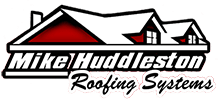Owning or managing a commercial building with a flat roof comes with unique challenges. While flat roofs are a popular choice due to their cost-effectiveness and space utilization, they require special attention to maintain. Flat roofs can face issues that, if not addressed promptly, may lead to significant damage and costly repairs. In this article, we will explore common maintenance challenges with commercial flat roofs and provide practical solutions to tackle them effectively.
Understanding the Common Issues With Flat Roofs
Flat roofs, while practical and cost-effective, come with their own set of challenges. Here are some common issues that flat roofs often face:
- Leaks and Water Damage: Flat roofs are prone to leaks due to their low slope. Water can easily pool on the surface, increasing the risk of leaks. This can lead to water damage inside the building if not addressed promptly.
- Ponding Water: One of the most common problems with flat roofs is ponding water. Ponding occurs when water remains on the roof for more than 48 hours. It can weaken the roofing material and lead to leaks over time.
- Membrane Damage: The roofing membrane, which is the waterproof layer, can get damaged due to foot traffic, weather conditions, or debris. Tears and punctures in the membrane can compromise the roof’s integrity.
- Blistering and Cracking: Exposure to extreme temperatures can cause the roofing material to expand and contract. This can lead to blistering and cracking, which are signs of aging and wear.
- Lack of Drainage: A proper drainage system is crucial for flat roofs. Poor drainage can result in water accumulation, leading to ponding and leaks.
- Vegetation Growth: Flat roofs can sometimes support the growth of moss and algae, especially if they retain moisture. Vegetation can penetrate the roofing material, causing deterioration.
Recognizing these issues early can help in taking preventive action and avoiding costly repairs in the future.
Effective Solutions for Flat Roof Leaks
Leaks are a significant concern for flat roofs, but there are effective ways to address and prevent them. Here are some solutions to manage flat roof leaks:
- Regular Inspections: Conduct regular inspections to identify potential leaks early. Look for signs of water stains, mold, or damp spots on the ceiling. Early detection can help in timely repairs.
- Proper Sealing: Ensure that the roof is properly sealed around vents, chimneys, and skylights. Use high-quality sealants to close any gaps or cracks that could allow water to penetrate the roof.
- Repair Damaged Membranes: Address any tears or punctures in the roofing membrane immediately. Use appropriate patching materials to fix the damaged areas and restore the membrane’s integrity.
- Install Roof Coatings: Applying a roof coating can provide an additional layer of protection against leaks. Roof coatings are designed to be waterproof and can help extend the life of the roof.
- Improve Drainage Systems: Ensure that the roof has a proper drainage system to prevent water accumulation. Keep gutters and downspouts clear of debris to allow water to flow off the roof efficiently.
- Use Roof Flashing: Install flashing around roof edges and joints to direct water away from vulnerable areas. Flashing is typically made of metal and helps prevent water intrusion.
- Professional Repairs: If you find a significant leak or damage that is beyond your DIY capabilities, seek professional help. Roof experts have the knowledge and tools to fix leaks effectively.
By taking these steps, you can manage and prevent leaks, ensuring that your flat roof remains in good condition for years to come.
Preventive Measures to Avoid Ponding Water
Ponding water can be a serious issue for flat roofs. Fortunately, there are effective preventive measures you can take to avoid this problem. Here’s what you should do:
- Ensure Proper Slope: A slight slope helps direct water toward drainage points. Make sure your flat roof has a designed slope of at least 1/4 inch per foot using tapered insulation or by re-pitching.
- Install Adequate Drainage Systems: Proper drainage is crucial. Install multiple drains or scuppers to allow water to exit the roof efficiently. Regularly check these systems to ensure they are functioning properly.
- Keep the Roof Clean: Debris like leaves and dirt can clog drains and cause water to pool. Make it a routine to clean the roof, especially after storms or windy days.
- Regular Maintenance Checks: Schedule periodic maintenance checks to identify and fix small issues before they become big problems. Look for signs of standing water and address the causes immediately.
- Use High-Quality Roofing Materials: Invest in materials that are specifically designed for flat roofs and can withstand standing water better. Upgraded membranes or coatings can help reduce the risk of water damage.
- Install a Roof Membrane: Roof membranes made of materials like EPDM or TPO are designed to handle water better than traditional asphalt. They add an extra layer of waterproofing.
These measures can help avoid the buildup of ponding water, maintaining the longevity and performance of your flat roof.
Best Practices for Prolonging the Life of Your Flat Roof
Extending the life of your flat roof requires proactive care and maintenance. Here are some best practices to help you get the most out of your roof:
- Regular Inspections and Maintenance: Conduct thorough inspections at least twice a year and after major weather events. Look for signs of damage or wear and tear and schedule repairs as needed.
- Prompt Repairs: Addressing small issues immediately can prevent them from becoming larger, more costly problems. Fix leaks, cracks, and punctures as soon as they are discovered.
- Use Reflective Coatings: Applying a reflective coating can help protect the roof from harmful UV rays, reducing heat absorption and thermal expansion. This can decrease the deterioration of roofing materials.
- Manage Roof Traffic: Limit roof access to essential personnel only. Use walkways to protect the roofing material from damage caused by foot traffic and equipment.
- Check HVAC Systems: If your roof supports HVAC systems, regularly inspect and maintain these units to prevent leaks or damage. Ensure that units are mounted properly and any associated piping is secure.
- Trim Overhanging Branches: Trees around your building can pose a risk to your roof. Trim back overhanging branches to avoid damage from falling limbs or accumulated leaves.
- Seasonal Preparations: Before the stormy or snowy seasons, take extra precautions to reinforce your roof. This may include verifying that drainage systems are clear and functioning and ensuring the roof membrane is in good condition.
By following these best practices, you can significantly extend the lifespan of your flat roof and protect your investment.
Conclusion
Maintaining a commercial flat roof presents its own set of challenges, but with the right strategies, you can tackle them effectively. Understanding common issues like leaks and ponding water is crucial for taking timely action. Implementing solutions like regular inspections, proper sealing, and adequate drainage can immensely improve your roof’s performance and longevity.
For expert advice and top-quality services, look no further than Mike Huddleston Roofing Systems. Our experienced team is ready to help you with all your flat roofing needs. Call us today to schedule a consultation and keep your roof in top shape.

